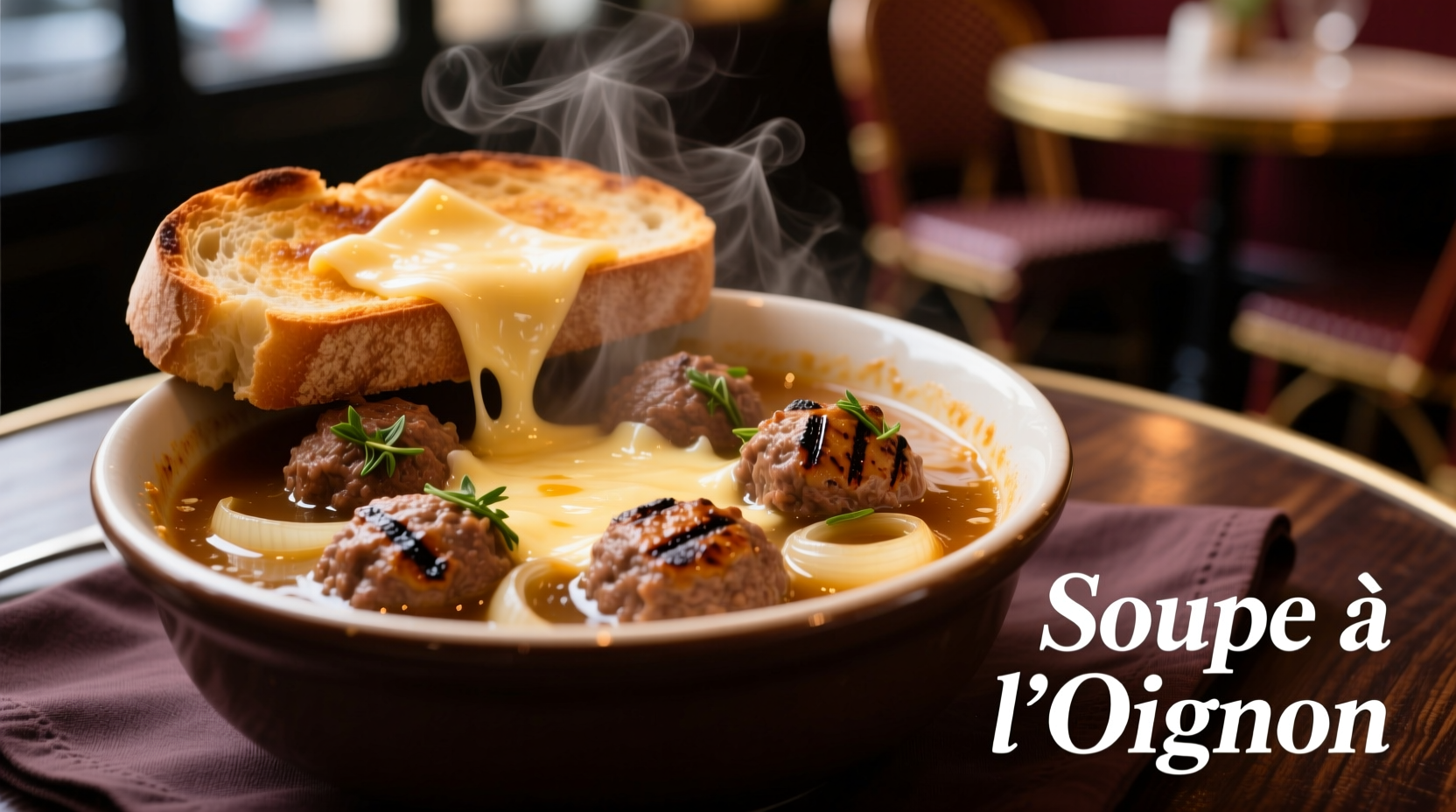Meatballs with French onion soup combines two beloved comfort foods into one satisfying dish. The tender meatballs absorb the rich, savory flavors of the caramelized onions and beef broth, creating a meal that's both elegant enough for entertaining and simple enough for weeknight dinners. This guide reveals the precise techniques to achieve perfectly textured meatballs and deeply flavorful soup every time.
The Evolution of French Onion Soup with Meatballs
While traditional French onion soup dates back to Roman times, the addition of meatballs represents a modern American adaptation. Originally a peasant dish made with stale bread and onions, French onion soup gained popularity in 18th century Paris bistros. The meatball variation emerged in mid-20th century America as home cooks sought heartier versions of the classic soup.
| Era | Development | Key Ingredients |
|---|---|---|
| Roman Period | Basic onion soup created as peasant food | Onions, water, stale bread |
| 18th Century | Parisian bistros refined the recipe | Onions, beef broth, wine |
| 1960s America | Meatballs added for heartier version | Beef/pork meatballs, Gruyère cheese |
| Modern Day | Gourmet variations with specialty ingredients | Artisanal broths, heritage breed meats |
Essential Ingredients for Authentic Flavor
The magic of meatballs with French onion soup happens through careful ingredient selection. For the meatballs, use an 80/20 blend of ground beef and pork for optimal moisture and flavor. Fresh breadcrumbs soaked in whole milk create the perfect texture—never use dried breadcrumbs as they absorb too much moisture. For the soup base, yellow onions provide the ideal balance of sweetness and pungency, while a combination of beef and chicken stock creates complex depth.
Professional chefs recommend using European-style broth without MSG or artificial flavors. The U.S. Food and Drug Administration confirms that homemade broth contains fewer sodium and preservatives than many commercial alternatives.
Step-by-Step Preparation Guide
Meatball Creation Process
- Soak ½ cup fresh breadcrumbs in ¼ cup whole milk for 10 minutes
- Mix with 1 lb ground beef, ½ lb ground pork, 1 egg, 2 minced garlic cloves
- Add 2 tbsp finely chopped parsley and ½ tsp black pepper
- Gently form 1½-inch meatballs (avoid overhandling)
- Chill for 30 minutes before cooking
French Onion Soup Base
- Slice 4 large yellow onions thinly using a mandoline
- Cook slowly in 3 tbsp butter over medium-low heat for 45 minutes
- Add 1 tbsp all-purpose flour and cook for 2 minutes
- Pour in 6 cups quality beef broth and ½ cup dry white wine
- Simmer for 20 minutes before adding meatballs

Perfect Cooking Technique
The critical step for meatballs with French onion soup is the gentle simmering process. After adding your chilled meatballs to the prepared soup base, maintain a temperature between 180-190°F (82-88°C). Boiling will cause the meatballs to become tough and fall apart. Simmer for exactly 15 minutes—any longer and they'll lose their delicate texture.
For optimal results, professional chefs follow these context boundaries:
- Never add raw meatballs to boiling liquid
- Avoid stirring once meatballs are added
- Use a thermometer to monitor soup temperature
- Remove meatballs immediately after cooking time
Serving Suggestions and Pairings
Present meatballs with French onion soup in pre-warmed bowls to maintain temperature. Top with toasted baguette slices and melted Gruyère cheese for the classic finish. This dish pairs beautifully with:
- Light-bodied red wines like Pinot Noir
- Simple green salad with vinaigrette
- Crusty artisan bread for dipping
Common Mistakes to Avoid
Many home cooks make these critical errors when preparing meatballs with French onion soup:
- Rushing the onion caramelization process (requires minimum 40 minutes)
- Using dried breadcrumbs in meatballs (creates dense texture)
- Overcooking meatballs in the soup (leads to toughness)
- Adding cheese before serving (melts into soup instead of forming crust)
Variations for Dietary Needs
Adapt this classic recipe for various dietary requirements:
- Gluten-free: Substitute gluten-free breadcrumbs and use cornstarch instead of flour
- Dairy-free: Omit cheese topping or use nutritional yeast for similar flavor
- Lower sodium: Use low-sodium broth and increase herbs for flavor
- Vegan option: Use plant-based meatballs and vegetable broth











 浙公网安备
33010002000092号
浙公网安备
33010002000092号 浙B2-20120091-4
浙B2-20120091-4